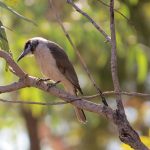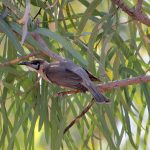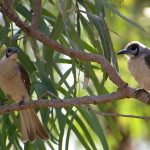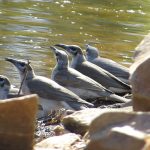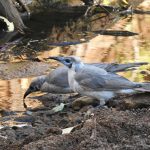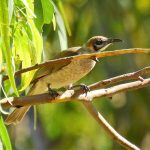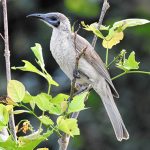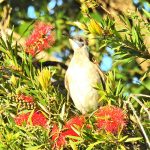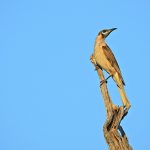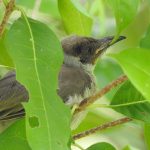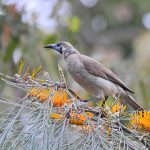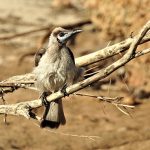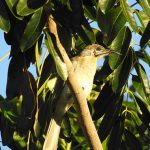LITTLE FRIARBIRD
SPECIES NAME
Little Friarbirds are medium-sized birds with an overall brownish-black plumage. They have a distinct bare, yellow patch of skin on their face, which extends behind the eye and down to the neck, giving them a distinctive appearance. Their bill is long and curved, adapted for feeding on nectar from flowers.
They belong to the family Meliphagidae, which includes a diverse group of nectar-feeding birds commonly known as honeyeaters. The Little Friarbird is a member of the genus Philemon, which is known for its distinctive bare facial skin and a unique, bulbous, and casqued bill.
Little Friarbirds are found in various regions of eastern and northern Australia. They inhabit a wide range of habitats, including woodlands, forests, coastal areas, and urban gardens.
Like other honeyeaters, Little Friarbirds primarily feed on nectar from a variety of flowers. They use their specialized bills to extract nectar from flowers, and their diet may also include insects, fruits, and other plant materials.
These birds are often seen foraging for nectar in flowering trees and shrubs. They are known for their loud and melodious calls, which can be heard throughout the day. They are highly active and agile while foraging for food.
Little Friarbirds build cup-shaped nests in trees, typically using twigs, grass, and spider webs. They lay one or two eggs, and both parents share the responsibility of incubating the eggs and feeding the chicks.
Like many native Australian birds, it faces habitat loss and degradation due to urbanization and land-use changes.
Little Friarbirds play an important role in pollinating various flowering plants in their habitat. As they feed on nectar, they transfer pollen between flowers, aiding in the reproduction of these plants.
The Little Friarbird contributes to the ecological balance of its habitat through its role as a nectar feeder and pollinator.

